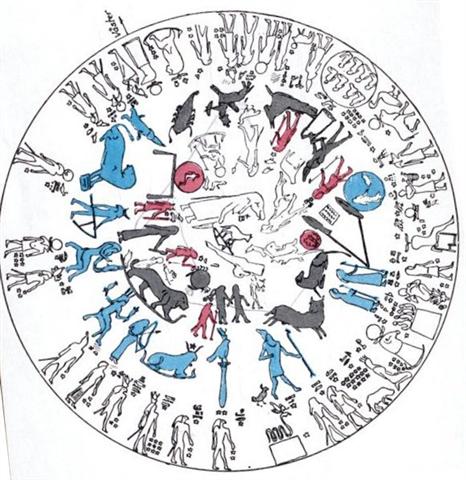6. It is not said outright that Rano Kau is equal to Te Poko Uri, but the word kau is embedded in the story:
On modern maps kau evidently has been changed into kao (cfr also Motu-kaokao):
The side (kao) of the head is the transitional zone between the dark back side and the facial front side, therefore kao is a useful word to indicate the beginning of the front side of the year (when the 'land' in the sky is rising up above 'the sea level'). We can use a famous old Egyptian map of the sky (the round zodiac of Dendera) to visualize what it means:
The redmarked figures were thought to be planets according to the one who coloured and enhanced the zodiac for us, viz. Henry Kjellson in his Forntidens teknik. The arrow outside the circle says všster meaning the direction west. I have reoriented the circle so as to have the bluemarked south pole (with a perching bird indicating no movement) straight down at the bottom. Our wellknow zodiacal figures are dark grey, for instance can we recognize Gemini (the Twins) just above the blue perching bird. 'Land' is illustrated by blue figures, and they lie to the south of our wellknown ones. In summer (north of the equator, where Egypt is located) the sky dome is higher up from the southern horizon than it is in winter, and the 12 bluemarked figures can therefore be seen. At the top of this round zodiac, at winter solstice, there are no blue signs. Instead the limit is defined by 4 dark grey ones (Aquarius, Capricorn, Sagittarius, and Scorpio). Together with the 12 blue figures the whole cycle measures 12 + 4 = 16, a number we recognize from the G text as the total number of periods in a year. |

